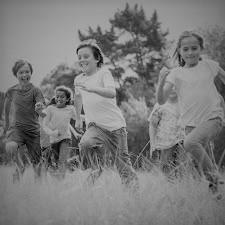In the heyday of its usage decades ago, “neighborhood” carried connotations of an entire micro-geography known especially well to its children. It represented the most important of all places: home.
“There goes the neighborhood” has been a punchline for innumerable jokes over the years, some unfortunately racist. But I like the line as Rodney Dangerfield used it when he heard that a friend had bought a nearby burial plot. In the heyday of its usage decades ago, the idea of a “neighborhood” carried connotations of an entire micro-geography that was usually well known to its children. The lines connecting the rest of the world were then more easily mapped out in steps rather than URLs.
Like most pre-adolescents growing up in the middle of the last century, I roamed these nearby streets and saw friends “just a few doors down the block.” An urban or suburban child’s world was mostly contained in the 20 or 30 homes that shared the same adjoining streets. The quarter acre lots in a typical city meant that schoolmates and the occasional weird neighbor were close at hand. And since children used to spend hours of “free range” roaming in their neighborhoods, the quirks of the place were as well-known as the picked-over ruins of an ancient town. Parents were usually happy to have their offspring out of the house, with the proviso to “be home in time for dinner.” It was often true for the next generation as well. If we couldn’t find our daughter in a late afternoon, a call to the folks next door or to the elderly couple behind our house usually located her. She and her brother did a much better job of collecting neighborhood friends than their parents.
The Inward Turn to Screen Time
The Washington Post recently noted that “the average American child spends five to eight hours a day in front of a digital screen, often at the expense of unstructured play in nature.” What an unnatural and inward turn this endless screen time represents, at least when compared to the childhoods observed by writers like Annie Dillard,1 Bill Bryson,2 or Lin-Manuel Miranda.3
 If you were still in your first decade of life, the rules of a typical middle-class family usually meant that two blocks joined by an alley or back fences were the outer boundaries for exploration. Becoming a little older meant that more distant parks and stores were fair game, within easy reach on the freedom machine of a bicycle. Of course, there was always a chance of being crushed by a neighbor’s 70s-era car with the brakes and steering of a boat. Somehow most of us managed to stayed clear enough to survive.
If you were still in your first decade of life, the rules of a typical middle-class family usually meant that two blocks joined by an alley or back fences were the outer boundaries for exploration. Becoming a little older meant that more distant parks and stores were fair game, within easy reach on the freedom machine of a bicycle. Of course, there was always a chance of being crushed by a neighbor’s 70s-era car with the brakes and steering of a boat. Somehow most of us managed to stayed clear enough to survive.
I now think of the idea of a neighborhood now as mostly a real estate variable, meaning an area of “comparable” properties closest to the home that buyers are considering. The term seems to have lost earlier echoes of richness that included a specific topography and a web of interpersonal connections. Cul-de-sacs and some apartment buildings are still likely to preserve some of this intimacy; linear streets, not so much. With many exceptions, courteous but cool relations with the folks down the street seem like the norm.
Overall, identifying one’s own neighborhood added what is now missing in the lives of so many: a sense of place. The common experiences of neighbors can add meaning to the simplest of activities. They make the world seem less alien or strange: a positive perception that was more likely when stories about the abuse and safety of children were less prominent. A good deal of that local and less dire news has died with city newspapers, leaving aggregated national news with troubling events that scare parents. Now, even front yards and neighborhood roaming are usually off limits.
As physical spaces, the idea of neighborhoods has not gone away, but they also seem less important as seedbeds supporting the important work of connecting with others. Serendipitous encounters help take the strangeness out of a community. And friendly neighbors have always been good for sharing an onion, a tool, or a child.
_______________________
1 An American Childhood, 1987
2 The Life and Times of the Thunderbolt Kid, 2006
3 In the Heights, 2021.
![]()
